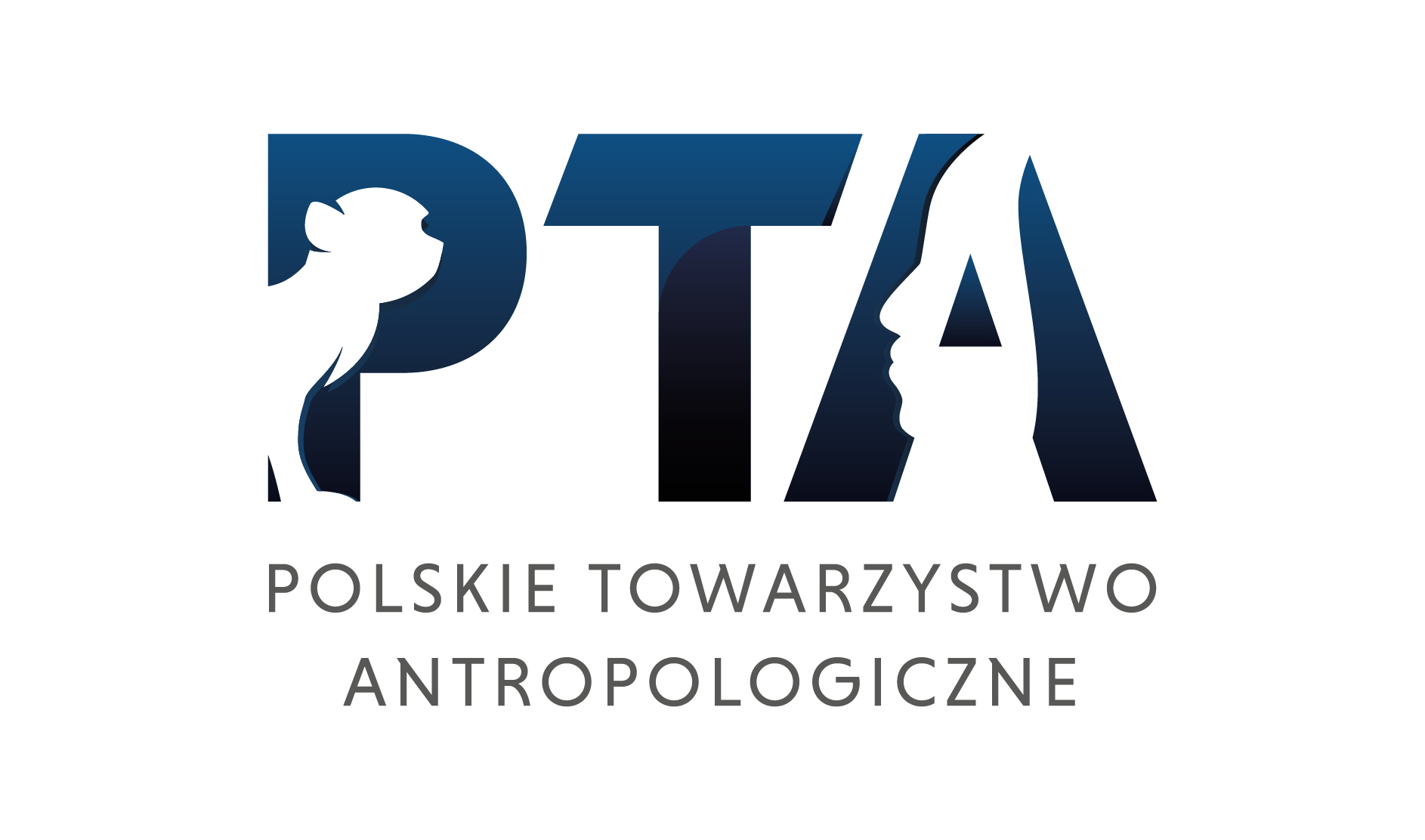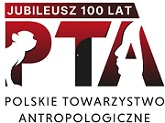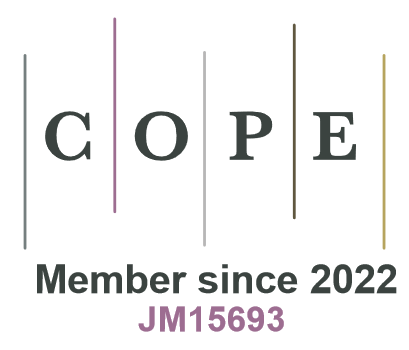On the doorstep to senility: physical changes, health status and well-being in midlife
DOI:
https://doi.org/10.1515/anre-2015-0017Keywords:
stage of life, menopause, andropause, morbidity, mortality, quality of lifeAbstract
The movement of the baby boomers into the middle ages made the 45–65 age cohort the largest and the fastest growing segment of population in the first decade of the 21st century. This demographic expansion will have multiple consequences for ageing society. This paper aimed to provide an overview on biology of midlife transition. Physical characteristics, midlife-specific morbidity and mortality were described with focus to sexual dimorphism in physique and gender gap in mortality and morbidity. These characteristics made midlife a separate and unique stage of life. In-depth knowledge of this life stage may be useful in identifying and solving problems of ageing individuals and population.
Downloads
References
Allan CA, Mclachlan RI. 2004. Age-related changes in testosterone and the role of replacement therapy in older men. Clin Endocrinol 60:653–70.
View in Google Scholar
Avis NE, Brockwell S, Colvin A. A universal menopausal syndrome. Am J Med 2005;118:37–46
View in Google Scholar
Bandosz P, O’Flaherty M, Drygas W, Rutkowski M, Koziarek J, Wyrzykowski B, Zdrojewski T, Capewell S. 2012. Decline in mortality from coronary heart disease in Poland after socioeconomic transformation: modelling study. BMJ 344:d8136 doi: 10.1136/bmj.d8136
View in Google Scholar
Barrett-Connor E. 2013. Gender differences and disparities in all-cause and coronary heart disease mortality: epidemiological aspects. Best Pract Res Clin Endocrinol Metab 27(4): 481–500.
View in Google Scholar
Bernis C, Reher DS. 2007. Environmental contexts of menopause in Spain: comparative results from recent research. Menopause 14(4): 777–87.
View in Google Scholar
Bhupathy P, Haines CD, Leinwand LA. 2010. Influence of sex hormones and phytoestrogens on heart disease in men and women. Womens Health (Lond Engl). 6(1): 77–95. doi:10.2217/whe.09.80.
View in Google Scholar
Case A, Deaton A. 2015. Rising morbidity and mortality in midlife among white non-Hispanic Americans in the 21st century. PNAS doi/10.1073/pnas.1518393112.
View in Google Scholar
Collaborative Group on Hormonal Factors in Breast Cancer. 2012. Menarche, menopause, and breast cancer risk: individual participant meta-analysis, including 118 964 women with breast cancer from 117 epidemiological studies. Lancet Oncol 13:1141–51.
View in Google Scholar
Danneskiold-Samsoe B, Bartels EM, Bulow PM, Lund H, Stockmarr A, Holm CC, et al. 2009. Isokinetic and isometric muscle strength in a healthy population with special reference to age and gender. Acta Physiol (Oxf) 197 S 673:1–68.
View in Google Scholar
Dennerstein L, Lehert P, Guthrie J. The effects of the menopausal transition and biopsychosocial factors on well-being. Arch Women Ment Health 2002;5:15–22.
View in Google Scholar
DeSalvo KB, Bloser N, Reynolds K, He J, Muntner P. 2005. Mortality prediction with a single general self-rated health question A meta-analysis J Gen Intern Med 20:267–275.
View in Google Scholar
Dratva J, Gómez Real F, Schindler C, et al. 2009. Is age at menopause increasing across Europe? Results on age at menopause and determinants from two population-based studies. Menopause 16(2): 385–94.
View in Google Scholar
Dossus L, Allen N, Kaaks R, et al. 2010. Reproductive risk factors and endometrial cancer: the European Prospective Investigation into Cancer and Nutrition. Int J Cancer 127: 442–51.
View in Google Scholar
Feldman HA, Longcope C, Derby CA, et al. 2002. Age trends in the level of serum testosterone and other hormones in middle-aged men: longitudinal results from the Massachusetts male aging study. J Clin Endocrinol Metab 87:589–98.
View in Google Scholar
Freund AM, Ritter JO. 2009. Midlife crisis: a debate. Gerontology 55:82–591.
View in Google Scholar
Gold E, Crawford SL, Avis NE, et al. 2013. Factors related to age at natural menopause: longitudinal analyses from SWAN. Am J Epidemiol 178(1):70–83.
View in Google Scholar
Gosden RG. 1985. Biology of menopause: The causes and consequences of ovarian aging. New York: Academic Press.
View in Google Scholar
Green L. 2010. Understanding the life course. Sociological and psychological perspectives. Cambridge: Polity Press.
View in Google Scholar
Guyatt GH, Feeny DH, Patrick DL, 1993. Measuring health-related quality of life. Ann Intern Med 118(8):622–29.
View in Google Scholar
He C, Kraft P, Chasman DI, Buring JE, Chen C, Hankinson SE, Paré G, Chanock S, Ridker PM, Hunter DJ. 2010. A large-scale candidate-gene association study of age at menarche and age at natural menopause. Hum Genet 128(5):515–27.
View in Google Scholar
Hrafnhildur L. Runolfsdottir HL, Sigurdsson G, Franzson L, Indridason OS. 2015. Gender comparison of factors associated with age-related differences in bone mineral density. Arch Osteoporos 10:23 DOI 10.1007/s11657-015-0214–7.
View in Google Scholar
Joakimsen O, Kaare H, Bønaa KH, Stensland-Bugge E, Jacobsen BK. 1999. Age and sex differences in the distribution and ultrasound morphology of carotid atherosclerosis. The Tromsø Study. Arterioscler Thromb Vasc Biol 19:3007–3013.
View in Google Scholar
Jung CG, 1933. Modern Man in Search of a Soul. New York: Harcourt, Brace and World.
View in Google Scholar
Kaczmarek M. 2004. The midlife well-being, gender and marital status. Przegl Antropol/Anthropol Rev 67: 57–71
View in Google Scholar
Kaczmarek M. 2006. Menopausal status and satisfaction with life in Polish women. Maturitas 54 (S1):16–17.
View in Google Scholar
Kaczmarek M. 2007. Określenie wieku menopauzy naturalnej w populacji polskich kobiet. Przegl Menop 2:77–82.
View in Google Scholar
Kaczmarek M. 2007a. The timing of natural menopause in Poland and associated factors. Maturitas 57:139–53.
View in Google Scholar
Kaczmarek M. 2007b. Variation in body mass index of the midlife Poles. J Hum Ecol 15:91–99.
View in Google Scholar
Kaczmarek M, Lasik E. 2006a. Correlates of biological age in postmenopausal life. Przegl Antropol-Anthropol Rev 69:15–26.
View in Google Scholar
Kaczmarek M, Pacholska-Bogalska J, Kwaśniewski W, Konarski J, Halerz-Nowakowska B, Goździka-Józefiak A. 2015. A microsatellite polymorphism in IGF1 gene promoter and timing of natural menopause in Caucasian women. Int J Med Sci 12(1):32–41.
View in Google Scholar
Kaczmarek M, Skrzypczak M. 2002. Do aging male symptoms affect subjective feeling of well-being? Variability and Evolution 10:39–53.
View in Google Scholar
Kaczmarek M, Skrzypczak M. 2008. Variation in biological status among Polish males and underlying socio-economic factors. Anthropol Rev 71:17–32
View in Google Scholar
Kaczmarek M, Skrzypczak M. 2009. Zróżnicowanie odczuwania symptomów towarzyszących starzeniu się mężczyzn w grupach o różnym statusie społecznym. Przegl Lek 66(8):90–97.
View in Google Scholar
Kaczmarek M, Skrzypczak M. 2012. Perceived health status among middle-aged Polish people in relation to selected demographic and social factors. Anthropol Rev 75(2): 93–107.
View in Google Scholar
Kaczmarek M, Skrzypczak M., Łącka K. 2005, Differentiation of gonadotropin and sex hormone levels in 50, 60 and 70-year old men. An attempt to indicate a normal range. Przegl Antropol-Anthropol Rev 68:19–29.
View in Google Scholar
Kaczmarek M, Szwed A. 1997. A review of anthropological approaches to ageing. Przegl Antropol 60:35–46.
View in Google Scholar
Karvonen-Gutierrez CA. 2015. The importance of disability as a health issue for mid-life women. Women’s Midlife Health 1:10 DOI 10.1186/s40695-015-0011-x.
View in Google Scholar
Kirkwood TB, 2005. Understanding the odd science of aging. Cell 120: 437–47.
View in Google Scholar
Kuh DL, Wadsworth M, Hardy R. 1997. Women’s health in midlife: the influence of the menopause, social factors and health in earlier life. Br J Obstet Gynaecol 104(8):923–33.
View in Google Scholar
Kuh D, Bassey EJ, Butterworth S, Hardy R, Wadsworth ME. 2005. Grip strength, postural control, and functional leg power in a representative cohort of British men and women: associations with physical activity, health status, and socioeconomic conditions. J Gerontol A Biol Sci Med Sci 60(2):224–31.
View in Google Scholar
Lipowicz A. 2003. Biological fitness at middle-age is inferior in both the very lean and the obese. – Przegl Antropol-Anthropol Rev 66:55–63.
View in Google Scholar
Lipowicz A, Gronkiewicz S, Malina RM. 2002. Body mass index, overweight and obesity in married and never married men and women in Poland. American Journal of Human Biology 14: 468–475
View in Google Scholar
McDonald RB. 2014. Biology of aging. New York and London: Garland Science, Taylor & Francis Group, LLC.
View in Google Scholar
Melby MK, Lock M, Kaufert P. Culture and symptom reporting at menopause. Hum Reprod Update 2005;11:495–512
View in Google Scholar
Moen P and Wethington E. 1999. Midlife development in a life course context. In: SL Willis and JD Reid (editors) Life in the middle: psychological and social development in middle age. Academic Press pp. 3–18.
View in Google Scholar
Morris DH, Jones ME, Schoemaker MJ, et al. 2011. Familial concordance for age at natural menopause: results from the Breakthrough Generations Study. Menopause 18(9): 956–61.
View in Google Scholar
Muñoz-Najar U and Sedivy JM, 2011. Epigenetic control of aging. Antioxidants and Redox Signaling 14(2):241–59.
View in Google Scholar
Nichols M, Townsend N, Scarborough P, Rayner M. 2014. Cardiovascular disease in Europe 2014: epidemiological update. European Heart Journal doi:10.1093/eurheartj/ehu299.
View in Google Scholar
North American Menopause Society 2010. Overview: Introduction to menopause. 143(2), S4-S5.
View in Google Scholar
Oksuzyan A, Brønnum-Hansen H, Jeune B. 2010. Gender gap in health expectancy. Eur J Ageing 7:213–218.
View in Google Scholar
Report of a WHO Scientific Group. Research on the menopause. 1981. WHO Technical Report Series 670, Geneva: World Health Organisation.
View in Google Scholar
Santoro N, Epperson CN, Mathews SB. 2015. Menopausal symptoms and their management. Endocrin Metab Clin 44(3):497–515.
View in Google Scholar
Shaw BA and Agahi N. 2014. Smoking and physical inactivity patterns during midlife as predictors of all-cause mortality and disability: A 39-year prospective study. Eur J Ageing 11(3):195–204.
View in Google Scholar
Sievert Leidy L, Waddle D, Canali K. 2001. Marital status and age at natural menopause: Considering pheromonal influence. Am J Hum Biol 13(4):479–85.
View in Google Scholar
Sievert LL, Flanagan EK. 2005 Geographical Distribution of Hot Flash Frequencies: Considering Climatic Influences. Am J Phys Anthropol 128:437–443.
View in Google Scholar
Sievert Leidy L. 2014. Anthropology and the study of menopause: Evolutionary, developmental, and comparative perspectives. Menopause 21(10):1151–9.
View in Google Scholar
Sievert Leidy L. 2014a. Menopause across cultures: Clinical considerations. Menopause 21(4):421–3.
View in Google Scholar
Stanworth RD, Jones HT 2008. Testosterone for the aging male; current evidence and recommended practice. Clinical Interventions in Aging 3(1):25–44.
View in Google Scholar
Svedberg P, Bardage C, Sandin S, Pedersen NL. 2006. A prospective study of health, life-style and psychosocial predictors of self-rated health. Eur J Epidemiol 21:767–76.
View in Google Scholar
Thomas F, Renaud F, Benefice E, et al. 2001. International variability of ages at menarche and menopause: patterns and main determinants. Hum Biol 73(2): 271–90.
View in Google Scholar
Towfighi A, Zheng L, Ovbiagele B. 2009. Sex-specific trends in midlife coronary heart disease risk and prevalence. Arch Intern Med.;169:1762–6.
View in Google Scholar
Tseng LA, El Khoudary SR, Young EA, Farhat GN, Sowers M, Sutton-Tyrrell K, et al. The association of menopause status with physical function: the Study of Women’s Health Across the Nation. Menopause. 2012;19(11):1186–92.
View in Google Scholar
Tseng LA, Delmonico MJ, Visser M, Boudreau RM, Goodpaster BH, Schwartz AV, et al. 2014. Body composition explains sex differential in physical performanceamong older adults. J Gerontol A Biol Sci Med Sci 69(1):93–100.
View in Google Scholar
Vance ML. 2003. Andropause. Growth Horm IGF Res 13(Suppl A):S90–2.
View in Google Scholar
Vermeulen A.2000. Andropause. Maturitas 34:5–15.
View in Google Scholar
Walker ML, Herndon JG. 2008. Menopause in nonhuman primates? Biol Reprod 79:398–406.
View in Google Scholar
Wellons M, Ouyang P, Schreiner PJ, et al. 2012. Early menopause predicts future coronary heart disease and stroke: the Multi-Ethnic Study of Atherosclerosis. Menopause (New York, N.Y.) 19(10): 1081–87.
View in Google Scholar
Welon Z, Bielicki T, Rogucka E, Malina RM. Effects of education and marital status on premature mortality among urban adults in Poland, 1988–1989. Am J Hum Biol 11: 397–403.
View in Google Scholar
Willis SL, Martin M, Röcke C. 2010. Longitudinal perspectives on midlife development: stability and change. Eur J Ageing 7(3):131–34.
View in Google Scholar
Williams GC. 1957. Pleiotropy, natural selection, and the evolution of senescence. Evolution 11:398–411.
View in Google Scholar
Wolański N. 2012. Rozwój biologiczny człowieka. Podstawy auksologii, gerontologii i promocji zdrowia. 8th edition, Wydawnictwo Naukowe PWN.
View in Google Scholar
Wróblewska W. 2002. Women’s health status in Poland in the transition to a market economy. Soc Sci Med 54(5):707–26.
View in Google Scholar
GBD 2013 Mortality and Causes of Death Collaborators. 2015. Global, regional, and national age-sex specific all-cause and cause-specific mortality for 240 causes of death, 1990–2013: a systematic analysis for the Global Burden of Disease Study 2013. Lancet 385(9963): 117–171. doi:10.1016/S0140–6736(14)61682–2.
View in Google Scholar
OECD Statistics, 2015 Downloaded April 28, 2015 from http://stats.oecd.org The 2015 Ageing Report: Underlying Assumptions and Projection Methodologies. Joint Report prepared by the European Commission (DG ECFIN) and the Economic Policy Committee (AWG). European Economy 8/2014. Downloaded April 28, 2015 from http://ec.europa.eu/economy_finance/publications/
View in Google Scholar
The EU in the world – population. 2015. Eurostat Statistics Explained. Downloaded April 28, 2015 from http://ec.europa.eu/eurostat/statistics-explained
View in Google Scholar
United Nations, Department of Economic and Social Affairs, Population Division 2015. World Population Prospects: The 2015 Revision, Key Findings and Advance Tables. Working Paper No. ESA/P/WP.241.
View in Google Scholar
WHO methods and data sources for global causes of death 2000–2012. Global Health Estimates Technical Paper WHO/HIS/HSI/GHE/2014.7. Available at http://www.who.int/healthinfo/statistics/GlobalCOD_method.pdf Accessed May 25, 2015.
View in Google Scholar
Downloads
Published
How to Cite
Issue
Section
License

This work is licensed under a Creative Commons Attribution-NonCommercial-NoDerivatives 4.0 International License.








